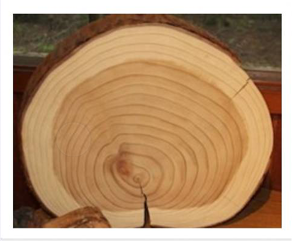Which would do maximum harm to tree
Loss of half of its leaves
Loss of half of its branches
Loss of all of its leaves
Loss of all its bark
The correct Answer is:D
Step-by-Step Solution:
1. Understanding the Options: We need to evaluate the four options provided: loss of half of its leaves, loss of half of its branches, loss of all of its leaves, and loss of all its bark.
2. Function of Bark: The bark of a tree is the outermost layer that protects the tree. It consists of all the tissue outside the vascular cambium. The bark serves several important functions:
- It protects the tree from physical damage (wear and tear).
- It acts as a barrier against bacterial infections.
- It helps in reducing water loss from the tree.
3. Evaluating Each Option:
- Loss of Half of Its Leaves: This can occur naturally, especially during autumn, and trees can survive this loss as they can still photosynthesize with the remaining leaves.
- Loss of Half of Its Branches: While this is significant, the remaining branches can still support the tree's functions, including photosynthesis.
- Loss of All of Its Leaves: This would severely impact the tree's ability to perform photosynthesis, but it can still survive if it has its bark intact.
- Loss of All Its Bark: This would expose the tree to various threats, including physical damage, bacterial infections, and excessive water loss. Without bark, the tree becomes highly vulnerable and can lead to its death.
4. Conclusion: Among all the options, the loss of all its bark would do the maximum harm to a tree because it compromises the tree's protection and overall health.
Final Answer: Loss of all its bark.
---
- It protects the tree from physical damage (wear and tear).
- It acts as a barrier against bacterial infections.
- It helps in reducing water loss from the tree.
- Loss of Half of Its Leaves: This can occur naturally, especially during autumn, and trees can survive this loss as they can still photosynthesize with the remaining leaves.
- Loss of Half of Its Branches: While this is significant, the remaining branches can still support the tree's functions, including photosynthesis.
- Loss of All of Its Leaves: This would severely impact the tree's ability to perform photosynthesis, but it can still survive if it has its bark intact.
- Loss of All Its Bark: This would expose the tree to various threats, including physical damage, bacterial infections, and excessive water loss. Without bark, the tree becomes highly vulnerable and can lead to its death.
Topper's Solved these Questions
- STRUCTURAL ORGANISATION IN PLANTS (MOPRHOLOGY OF FLOWERING PLANTS & ANATOMY OF FLOWERING PLANTS)Book:ALLENChapter:STRUCTURAL ORGANISATION IN PLANTS (MOPRHOLOGY OF FLOWERING PLANTS & ANATOMY OF FLOWERING PLANTS)Exercise:NEET-UG 2013
Explore 10 Videos
- STRATEGIES FOR ENHANCEMENT IN FOOD PRODUCTION & ANIMAL HUSBANDRYBook:ALLENChapter:STRATEGIES FOR ENHANCEMENT IN FOOD PRODUCTION & ANIMAL HUSBANDRYExercise:Question
Explore 47 Videos
- STRUCTURAL ORGANISATION OF ANIMALS (ANIMALTISSUE)Book:ALLENChapter:STRUCTURAL ORGANISATION OF ANIMALS (ANIMALTISSUE)Exercise:S
Explore 32 Videos
Similar Questions
Knowledge Check
Which metal catalyzed reaction would release the maximum amount of heat per CH2 unit ?
Acyclopropane +H2→ propaneBcyclobutane +H2→ butaneCcyclopentane +H2→ pentaneDcyclohexane +H2→ hexane
an old trunk of shisham ( Dalbergia sisso) tree would have the maximum amount of
View SolutionWhich ion would you expect to have the maximum splitting of - orbitals
View SolutionThe loss of which will harm the tree most
(a) Bark
(b) Half the leaves
(c) Half the branches
(d) All the leaves
View SolutionWhich of the following provide maximum mechanical strength to a tree trunk .
View SolutionWhich is most harmful for the life on the globe?
View SolutionObserve this image of a cut section of the tree . What would be the approximate age of this tree ?

View SolutionThe maximum biomagnification would be in which of the following in case of aquatic ecosystem
View Solution
